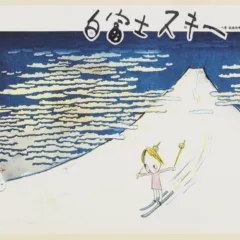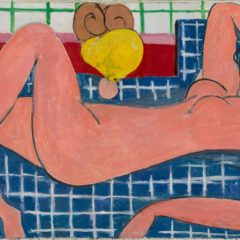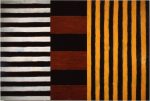[Andrea argues for the recognition and appreciation of Sari Dienes, a prolific and flexible artist whose work has largely been overlooked by history until this, her first solo museum show. — the Artblog editors]
The Drawing Center is showing a very small but powerful exhibition of the work of Sari Dienes (1898-1992), on view at the Lab gallery through Nov. 16; it is her first solo museum exhibition, and it is certainly belated. It is a must-see for anyone who is interested in the New York scene of the 1950s-80s, but doesn’t recognize Dienes’ name.
Friends in all the right places
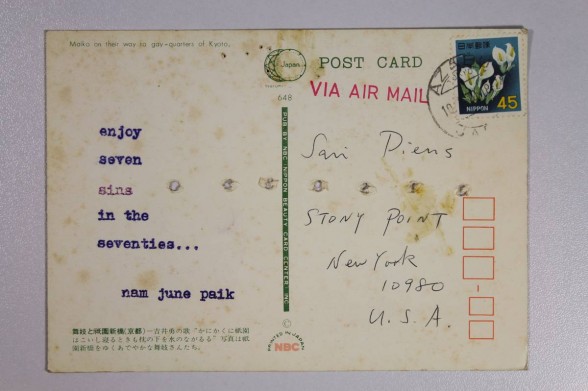
Dienes arrived in New York in 1939, having studied with Fernand Léger and Amédée Ozenfant in Paris, and lived in London, where she knew Max Ernst. In New York, she interacted with several generations of artists. She was ensconced in the experimental art scene of New York in the 1960s, which included John Cage, Merce Cunningham, Willem de Kooning, Robert Rauschenberg, Jasper Johns, Yvonne Rainer, Ray Johnson, and Nam June Paik. A number of important friendships originated from social and artistic events that Dienes organized.
Dienes was a member of the first cooperative women’s gallery, A.I.R., with a group of artists half her age, including Nancy Spero and Ana Mendieta; her mass of white hair always stands out in group photographs. She had a house in “The Land,” an artist’s cooperative in Rockland County, where her neighbors included photographer George Ancona, musician John Cage, potter Karen Karnes, musician David Tudor, and filmmaker Stan Van Der Beek.
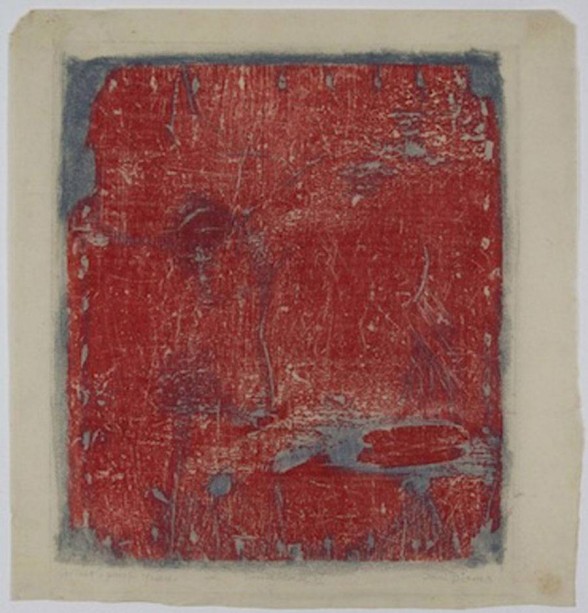
Dienes worked in a huge range of media, including installations with bottles, paintings in snow, collage and assemblage, prints and rubbings, machine photocopies, theater sets and costumes, textile design, and performance works, as well as acting on stage and in film, and writing poetry. I suspect her protean nature is in part responsible for curators’ neglect of her work. In the early 1950s, she had several exhibitions at Betty Parsons Gallery–at the same time the dealer was showing the work of Pollock, Still, Rothko, and others whose emotive work was very different from hers–but moved away from commercial representation afterwards, which is another likely reason her reputation has not been properly maintained. A highly varied career–hence lack of a signature style–can be a liability for an artist’s sales, but should not preclude historical consideration.
Collage-like rubbings
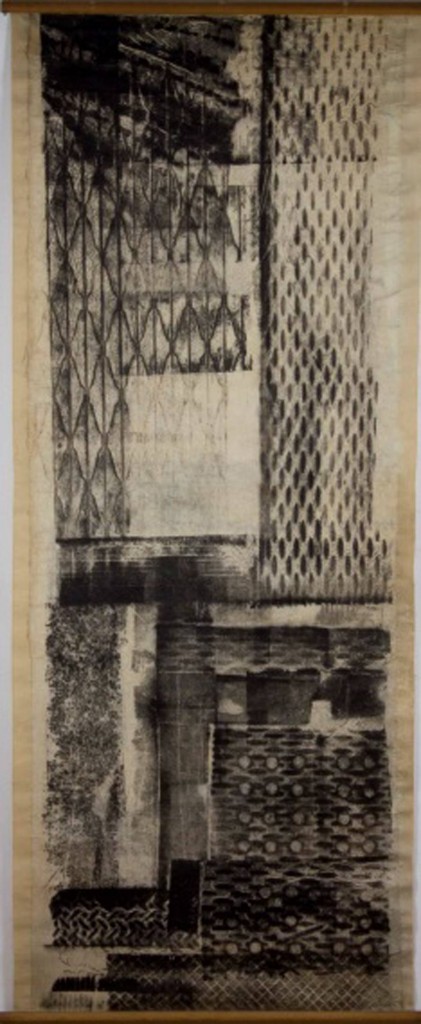
The exhibition concentrates on a series of work from the early 1950s, and a table case of related ephemera. With the exception of one woodcut, the work consists of large rubbings, the sources of which were textures Dienes found embedded in New York City streets–including manhole covers, subway grates, and sidewalks. She had learned rubbing from Ernst, but definitively made it her own. The rubbings resemble large, black-and-white collages of geometric and evenly-patterned elements, on a scale of much of the large painting of the time, and with similar presence.
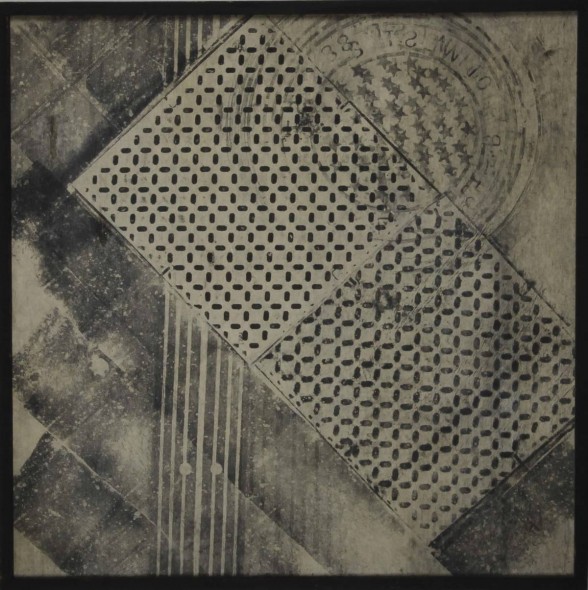
The rubbings are based on ideas parallel to those Cunningham explored in dance: vernacular sources, unexpected juxtapositions, and individual elements that functioned independently of each other. One of her assistants in making the rubbings was Jasper Johns, who was clearly impressed with her palimpsests of readymade imagery. The rubbings also anticipate much of Rauschenberg’s work, in their collage-like form, scale, and quotidian sources.
This is just a tiny glimpse of an oeuvre that should be known and inserted into the history of the period, in which it had a significant role. More of it can be seen on the website of the Sari Dienes Foundation.
Sari Dienes is on view at the Drawing Center’s Lab gallery, at 35 Wooster St., New York, New York, from Oct. 8 – Nov. 16, 2014.


